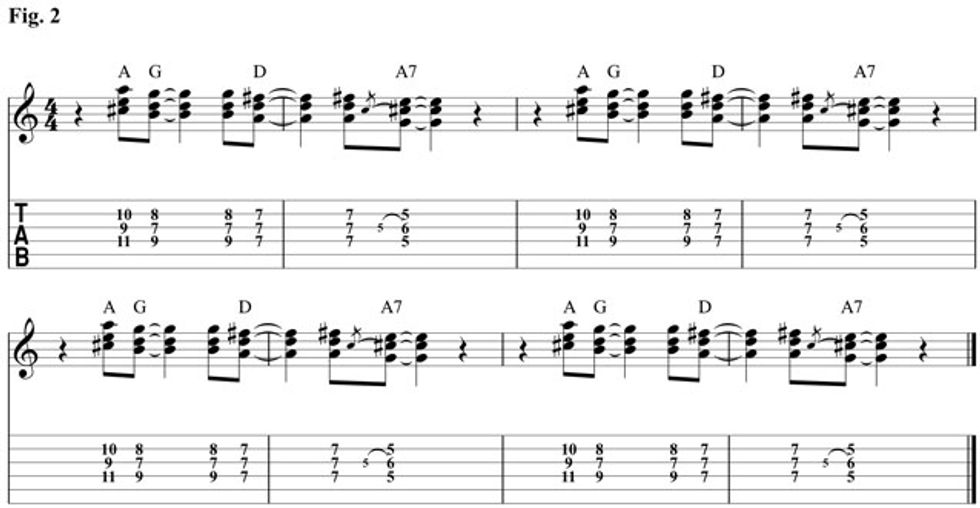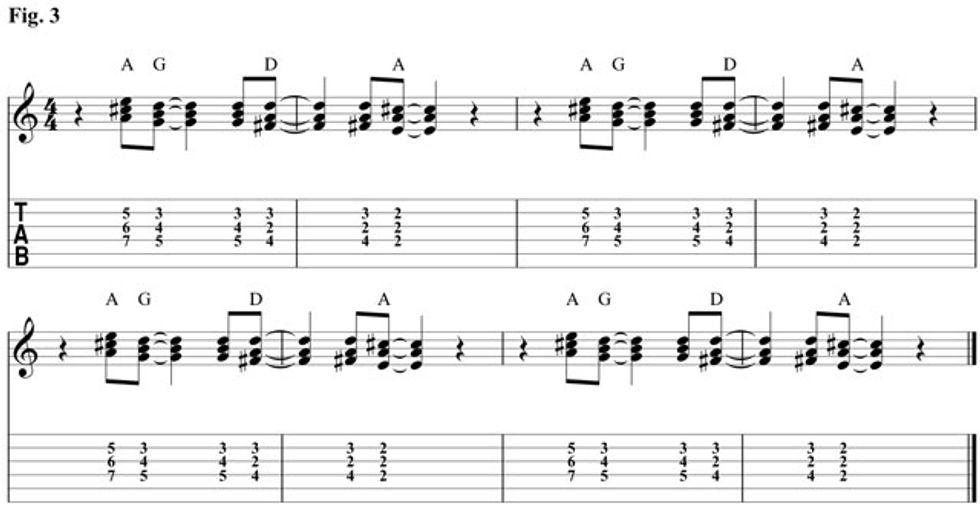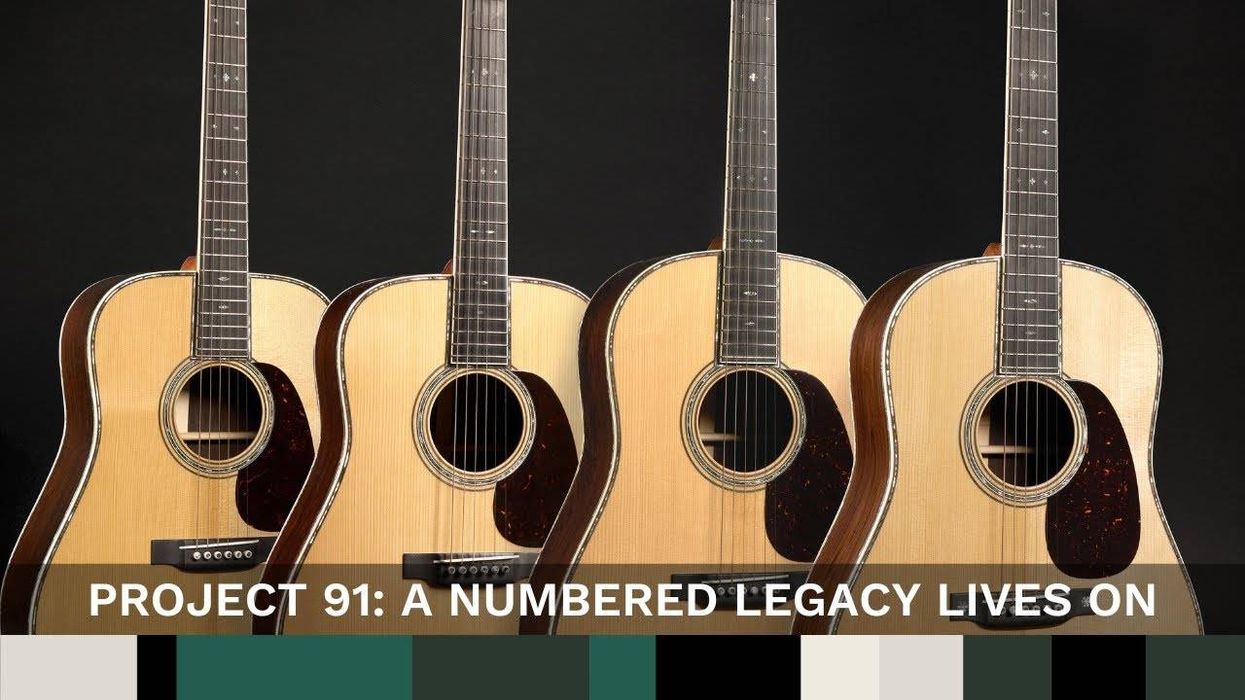Chops: Intermediate
Theory: Intermediate
Lesson Overview:
• Understand how to use diatonic major triads over dominant chords.
• Create tension by using diminished scales.
• Learn how Robben Ford keeps his comping simple, but effective.
Click here to download a printable PDF of this lesson's notation.
Robben Ford is one of the most sophisticated blues guitarists around. From his start with blues great Charlie Musselwhite to pop icons Joni Mitchell and George Harrison—and even a short stint with jazz legend Miles Davis—Ford is an in-demand guitarist for his amazing touch and soulful sound. I’m going to break down a few key elements of his playing for you. In this installment I’m going to focus on two of those elements—his use of triads to enhance his comping and his use of the diminished scale to transition from the I chord to the IV chord and from the V chord back to the I chord.
One thing that sticks out to me when I hear Ford’s playing is the way he comps the chords in a blues. There are only three chords in a 12-bar blues, but the way Ford plays, you’d think there were 12 or more. One harmonic tool Ford uses almost all the time is major triads. For example, let’s say we are playing over an A7 chord (which is the V chord in the key of D). In the key of D, you have major triads on the I, IV, and V chords, which are all fair game in your comping. Basically these triads will be added to the A7 chord voicings he already uses.
First let’s take a look at Fig. 1 which shows these three triads all the way up the neck. For now, I’m going to stick with the 2nd, 3rd, and 4th strings. The lower strings will be too muddy of a sound and the 1st string is too pronounced and should only be used to accent certain beats.

Now let’s take those triads and create a blues rhythm part in Fig. 2. This is a cool rhythmic phrase over an A7. We are starting with an A major triad in the 9th position and just moving through the other diatonic major triads (G and D) before landing with a partial A7 chord in the 5th position.

A lot of times you just need the b7th and the 3rd of the dominant chord, but in this case I also included the 5th. These four chords are just repeated in this same order four times. It’s a two-measure phrase, so you would only repeat it twice in a 12-bar blues. I just played it a few times so you could get the feel. Notice I’m not using all the triads from Fig. 1—only three of them. There is no right answer for how many to use, other then how it sounds.
Now let’s do the same kind of idea with a different set of triads. This time we will leave out the A7 voicing and end on an A triad. This is another characteristic move of Ford’s, since he is heavily influenced by R&B music, which uses a lot of triads.
In Fig. 3, we’ll start in the same area where the previous example left off with a basic A major triad in the 5th position. We then move down in the same pattern, using both a G and D major triad, before landing on a 2nd position A major chord. As sophisticated as Robben Ford’s playing can be, he doesn’t consider any chord “too basic.” All chords are in play as far as he is concerned.

Now we’ll move to how Ford uses the diminished scale to transition from the I chord to the IV. In Fig. 4, he uses what I refer to as a G half-whole diminished scale (G–Ab–Bb–B–C#–D–E–F). We will be using this to go from a G7 chord to a C7 chord in a G blues. I am sure you noticed that I didn’t start the scale fingering on a G, but rather an F note. I’ve heard Robben speak about using this scale and he thinks of it as an F whole-half diminished scale built from the b7th of the I chord (G7). Since this scale is symmetrical, you can think of it either way and the notes still function in the same manner. This means you get the b5, #5, and the #9—it’s the ultimate “tension and release” scale.

Also, since it is a symmetrical scale, you can shift everything up and down the neck in minor thirds (three frets) and the notes will be the same. Why move it? Because you might need it to be in a different position to accommodate your scale or chord fingerings. In Fig. 5, you can see this scale used in context.

In our last figure of this installment (Fig. 6), we will transition from the V chord to the I chord in the key of D. I’m using a half-whole diminished scale, but this time I’m using one that lies right over the A7 voicing at the 5th fret. This gives us all the alterations of the A7 chord—the b5 (Eb), the #5(F), the b9 (Bb), and the #9(C). This scale can sound very mechanical, but Ford has this ability to make it sound so bluesy. Take your time with this one—there are a lot of notes and it goes by fast.

In the next installment, I’ll continue to break apart both Robben Ford’s comping and his incredibly bluesy phrasing for you into small digestible licks and phrases you’ll instantly be able to apply to your playing. Until then I hope you enjoy these rhythmic phrases and transition licks. Add them to you trick bag and bring ’em to your next jam.
 Dennis McCumber has been a guitar instructor and performer
for more than 20 years. He holds a Bachelor’s degree in music
education from The College of Saint Rose.
Dennis performs
regularly in the New York City area with various rock, blues, and funk bands, and occasionally as a classical soloist.
In addition to performing, Dennis has been a middle school
music teacher in the Bronx for the past 12 years. While
teaching in the Bronx, he was given a guitar lab by VH1
Save the Music and a keyboard lab from the radio station
Hot97 Hip Hop Symphony. Dennis has been an instructor at
the National Guitar Workshop since 1996, where he teaches
Blues, Funk, and Rock. Find out more at dennismccumber.com.
Dennis McCumber has been a guitar instructor and performer
for more than 20 years. He holds a Bachelor’s degree in music
education from The College of Saint Rose.
Dennis performs
regularly in the New York City area with various rock, blues, and funk bands, and occasionally as a classical soloist.
In addition to performing, Dennis has been a middle school
music teacher in the Bronx for the past 12 years. While
teaching in the Bronx, he was given a guitar lab by VH1
Save the Music and a keyboard lab from the radio station
Hot97 Hip Hop Symphony. Dennis has been an instructor at
the National Guitar Workshop since 1996, where he teaches
Blues, Funk, and Rock. Find out more at dennismccumber.com.

























